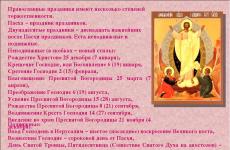The sequence of actions in case of a fire in a building. Actions in the event of a fire
Timely notification of a fire in the FPS of the State Fire Service, the management and duty services of the facility should be considered necessary condition organization of effective actions to rescue people and extinguish a fire before the arrival of fire departments. Having received a signal about a fire, the head of the organization must attract forces and technical means object to the implementation of the necessary evacuation measures, as well as those that help prevent the development of fire and smoke in the premises of the building.
The fire alarm system must work. In order to be sure that an alarm can be made, it is recommended to prepare other alarm equipment. Fire fighting plans should be prepared based on the level sketch, which should be indicated in green with escape routes through doors, corridors and stairs or outside stairs. Plans should be displayed at each level on access routes and in visible places so that escape routes can be known to all people in the training unit.
Fire extinguishing paths in an educational institution should be marked with standardized signs in accordance with specific technical rules so that their routes are easily recognizable day and night by those who use them in emergencies. Electrical installation for fire extinguishing must be functional and have a second source of energy in accordance with the technical rules.
Main fire phases
In order to ensure that fire extinguishing measures before the arrival of fire departments do not lead to casualties among volunteers, employees of the facility, the official organizing actions to primary fire fighting, should have at least minimal knowledge of the dynamics of fire development. IN general scheme development of a fire, three main phases should be distinguished: the initial stage, the stage of volumetric development of a fire, and the damping stage of a fire.
Rescue and rescue routes from the educational institution leading to the designated meeting point must be permanently usable and their width must not be narrowed by the placement of automatic juices, cabinets, flower pots, furniture or other items that may cause difficulty in evacuating people.
Places set by management educational institution, should be located in a safe place at safe distances from potential sources of danger and not interfere with access and intervention of intermediate forces arriving on the spot.
Fire: I phase(no more than 10 minutes) - the initial stage, including the transition of ignition into a fire (1-3 minutes) and the growth of the combustion zone (5-6 minutes). During the first phase, a predominantly linear spread of fire occurs along the combustible substance or material. Burning is accompanied by copious emission of smoke, which makes it difficult to determine the location of the fire. The average volume temperature rises in the room up to 200 °C (an increase in the average volume temperature in the room is 15 °C in 1 min.). The flow of air into the room first increases and then slowly decreases. It is very important to ensure isolation at this time. this room from the outside air and call the fire department at the first sign of a fire (smoke, flame). It is not recommended to open or open windows and doors to a burning room. In some cases, with sufficient provision of the tightness of the room, self-extinguishing of the fire occurs. If the source of the fire is visible, detected at this stage of the development of the fire, then it is possible to take effective measures to extinguish the fire with primary fire extinguishing equipment (fire extinguishers, sand, asbestos sheets, coarse woolen fabrics, barrels or containers with water) before the arrival of fire departments.
Preschoolers and students with locomotor disabilities should study in classrooms on the first floor without obstacles. If this is not possible, these classes will be selected for those students from whom the exit path to outside is the shortest. Actions on how evacuation activities are carried out during the occurrence emergency caused by the production of fire.
Fire in the school building. Personnel appointed by the decision of the head of the training unit will fire the school fire alarm. If there is no fire alarm system, the alarm set by the leadership of the training unit will be different than the one announcing recreation, its value will be displayed next to the evacuation plans and will necessarily be doubled in voice.
Fire: II phase(30-40 min.) - the stage of volume development of the fire.
During the second phase, a rapid process occurs, the temperature inside the room rises to 250-300 ° C. The volumetric development of the fire begins when the flame fills the entire volume of the room, and the process of flame propagation no longer occurs superficially, but remotely, through air gaps. Due to the destruction of the glazing (after 15-20 minutes from the start of the fire), the inflow fresh air sharply increases the development of the fire. The rate of increase in the average volumetric temperature is up to 50 °C in 1 min. the temperature inside the room rises from 500-600 °C to 800-900 °C. The maximum burnout rate is 10-12 minutes. Stabilization of the fire occurs at 20-25 minutes from the start of the fire and lasts 20-30 minutes.
All windows will be closed. Evacuation outside the building of all users will be carried out in accordance with the evacuation plans drawn up at the level of the unit of education. Preschoolers, students or students leave the building under the supervision and guidance of the teacher, who will be positioned so that they can easily see the evacuation action by closing the room door. They will follow him to a predetermined meeting point and designate accordingly for each class where an emergency will be present.
Access gates in the facility are opened, and traffic routes and access for specialized Vehicle. They enter the building only after intervention and with the consent of professional emergency services. If the fire is of small magnitude, it will operate with the first intervention equipment.
At this stage of fire development, attempts to extinguish the fire with primary fire extinguishing agents are not only useless, but also lead to the death of volunteers. If the source of combustion is detected at the stage of volumetric development of the fire, then the role primary funds fire extinguishers (fire extinguishers, sandboxes, asbestos cloths, coarse woolen fabrics, barrels or water containers) is reduced only to preventing the spread of fire along the escape routes and, thereby, ensuring the unhindered rescue of people. To directly extinguish the fire and prevent the spread of fire to new areas, before the arrival of fire departments, it is possible to use (subject to prior de-energization and the volunteers have experience in training) water from the floor-by-floor fire hydrants of the internal fire-fighting water supply.
Fire near the school. The person who spots the fire will immediately call 112 and report the incident. If the person watching the fire is a child, he will announce the first adult he or she encounters. Actions that took place before the occurrence of the emergency caused by the seismic event. All staff, namely teaching, non-teaching and auxiliary teaching staff, must be trained in how to behave properly in the event of a seismic event.
If this is not possible, they will be chosen for those classes of which the exit from the outside is the shortest. In every building educational institutions the teachers appointed by the decision shall be trained. in writing, heads of educational institutions responsible for emergency preparedness activities, or specialized persons to provide psychological consultation in case of emergency.
Persons responsible for ensuring fire safety, are obliged to make sure that in their area of responsibility on all keys, buttons and control knobs there are inscriptions indicating the operation for which they are intended (“enable”, “disable”, “reduce”, “add”, etc.), so that employees can:
independently (without an electrician on duty),
Evacuation routes must be marked with exit information signs so that they are easily recognizable day and night by all persons in the training unit who use them in an emergency. At the level of any training unit, its leader must establish in writing the composition of the team responsible for the evacuation.
Actions that occur during an emergency caused by an earthquake. In the case of educational units, earthquakes can occur during class hours when users are indoors or during breaks when preschoolers, pupils or students and hired personnel may be outside.
in a timely manner (before the use of water from fire hydrants),
unmistakably carry out stress relief from objects in the fire zone.
In addition, on the front side of power electrical panels and lighting network assemblies there should be inscriptions indicating their name and number, and with inside(for example, on doors) there should be descriptions of circuit breakers that ensure the selectivity of switching off current consumers receiving power from them.
How to act in case of an earthquake that occurs during classes: - Remain calm! It is also forbidden to use elevators. - After the earthquake, the staff of the training unit will check for injuries, as well as the security of rooms and exits from the building.
How to act in case of an earthquake that occurs during classes. Avoid places where objects can fall, such as rooftops, trees, electrical cables or buildings. Sit down, cover your head with your hands, counting from 1 to 60 in order to have a real perception of time and wait for the earthquake to end. Do not enter the buildings until they have been checked and you have been told they are safe.
Fire: III phase- fading stage of fire
During the third phase, afterburning occurs in the form of slow smoldering, after which, after some time (sometimes very long), the fire burns out and stops. However, despite the fading stage, the fire still requires measures to be taken to eliminate it, otherwise, under the influence of a sudden gust of wind or collapse of the structure, the fire may flare up with new force and cut off from the evacuation routes of workers who have lost their sense of danger. Usually, the elimination of a fire that has passed the full stage of volumetric development requires a thorough watering of all areas affected by fire. At the same time, in order to detect burning coals and smoldering foci, it is necessary to partially disassemble the structures, move large burnt objects from their places, and also check the walls, floors and ceilings to the touch: they must be cold.
Actions that take place after the occurrence of an emergency caused by a seismic event. It is imperative to wait for the earthquake to stop and avoid panic, and evacuation actions will take into account the characteristics of the building. The people who will be the first to leave the building are teachers and preschoolers, students or students in the classroom, located on the first floor to approach the halls to the exit, following the first floor, on the second floor, etc.
Avoid cluttering halls, especially stairs, and move as far as you can towards walls that don't have windows. For personal protection, teachers will use a catalog or thicker book, an object that they will place over their heads. teachers, preschool institutions, pupils or students and support staff leave the building for one person, using all routes established as safe, after checking their integrity at the designated meeting place.
Attention: after the complete elimination of the fire, free access to the place of fire should be prohibited! The point is not only that it is necessary to keep the place of the fire intact for the work of expert investigators to determine the causes of the fire, but also that after a fire there is always a threat of a collapse. Metal supports, not covered protective layer, expand under the action high temperature and shrink under the action of cooling water. In addition, at 450 °C, the yield strength of unprotected steel sets in, which significantly increases the risk of structural collapse.
At the meeting place, preschoolers, students or students will receive the group as in a classroom. There will be a minimum interval between each class so that each teacher can constantly observe and watch for the absence of one. As reported by 15 minutes, the fire broke out in Lentvar on Wednesday evening.
The reader turned the same day in 15 minutes. She appreciated the professionalism of the firefighters who later arrived, but said she was disappointed with the performance of the Lentvari team that showed up. Lentvariske further explained that after the firefighters, the locals were forced to “run into the fire and pull people out and gas cylinders, which was enough inside the house.
It is important to understand that the fire departments that arrived on call cannot immediately begin combat operations to extinguish the fire without conducting the appropriate reconnaissance, which is necessary to assess the situation and take action. right decisions. When conducting reconnaissance, the head of the fire extinguishing must establish:
According to her, the first firewall that arrived at the scene of the incident was very old and with a small tank, where there was not enough water for a long time, and the firefighters were forced to leave. He did not strengthen them any more, the reader said. Lentvariszk explained that the Lentvaris firefighters were not only unprepared for work, but possibly drunk, and as proof of their words, they transmitted the video from the tragic event to their place within 15 minutes.
Vida Šmigelskienė, spokeswoman for the Fire and Rescue Department, denied reports that firefighters arrived at the incident half an hour later. Shmigelskene in writing. Kshtutis Kirsnauskas, head of the Trakai Fire and Rescue Service, contacted to receive additional information about the actions of firefighters within 15 minutes.
The presence and nature of the threat to people, their location, ways, methods and means of rescue (protection), as well as the need to protect (evacuate) property;
The presence and possibility of secondary manifestations dangerous factors fire, including those caused by the peculiarities of the technology and organization of production at the fire facility;
The exact place and area of burning, what exactly burns, as well as the ways in which fire and smoke spread;
Kirnauskas, who today worked on the team in Lentvaris, is still believed to have received no complaints. Kirsnauskas claims that he saw the firefighters of Lentvaris himself during the shift exchange, but he did not have any suspicions of their stupidity. Kirsnauskas believes that these difficulties are caused by both new and old methods.
You say the water didn't serve well. This means that the pump was working - there was water in the intestines, but something could be wrong with the syringe. Perhaps this is just a premise that somewhere you can get dirt, rocks or something. Understand that there are two people in the city of Lentwar: one drives a car, works with a pump, the other person goes out, and so on. The information I have - the original message was that there could be a person in this house.
Availability, condition and ability to use funds fire protection object;
location, condition, possible ways use of nearby water sources;
The presence of electrical installations under voltage and the feasibility of turning them off;
Possible ways of introducing forces and means to save people and extinguish a fire, as well as other data necessary for selection decisive direction military operations.
In my experience, a firefighter who was wearing Breathe-helping machine, went to look for a person who could help him or get him out. Kirnauskas explained that he was not exactly familiar with the circumstances of the tragic fire, so when commenting on the incident, assumptions were made about how firefighters should act according to procedures. Kirsnauskas said the fact that residents took one person from a burning building does not relieve firefighters from the responsibility of investigating inner part buildings because they can't trust people.
The meeting of the fire brigade units arrived at the fire site by officials, responsible persons of the facility to provide the necessary advice on the above issues can significantly reduce the time for reconnaissance and increase the efficiency of firefighters' combat operations to save people and extinguish the fire.
In my experience, a firefighter who was wearing a breathing apparatus went looking for a person who could help him or get him out. Kirnauskas explained that he was not exactly familiar with the circumstances of the tragic fire, so when commenting on the incident, assumptions were made about how firefighters should act according to procedures. Kirsnauskas said that the fact that residents took one person from a burning building does not relieve firefighters from the responsibility of investigating the inside of the building because they cannot trust people.
Memo on actions in case of fire
In the event of a fire, the actions of the employees of the organization and the persons involved in extinguishing the fire should first of all be aimed at ensuring the safety of people, their evacuation and rescue.
Each employee of the organization who discovered a fire and its signs (smoke, smell of burning or smoldering) various materials, temperature increase, etc.) must:
immediately report a fire to the fire brigade by calling the city telephone “01” or by the cell phone “112” (in this case, you must clearly state the address of the organization, the place of the fire, and also indicate your position and surname);
notify the head of the organization or the employee replacing him about the fire;
use the fire warning system for people, start yourself and involve other people in evacuating the building to a safe place according to the evacuation plan;
If necessary, turn off the electricity, suspend the operation of individual units and sections that contribute to the development of fire and smoke in the premises of the building;
assess the situation and start extinguishing the source of fire with the available fire extinguishers (fire extinguishers) to eliminate it at an early stage;
organize a meeting of fire departments (to allocate a person who knows the location of access roads and water sources well for the meeting of fire departments)
If you see that you cannot cope with the fire, and the fire is rampant, you must urgently leave the premises and help people out. At the same time, people are taken out of those premises where, in a fire, there is the greatest threat to life, as well as from the upper floors of the building, children are taken out first. younger ages, the elderly and the disabled. It is very important to take warm clothes with you in winter when it is very cold and dress the children or wrap them in a blanket. When leaving the premises, it is necessary to turn off, as far as possible, electricity and gas.
In case of fire, smoke accumulates in the upper part of the room, therefore, when smoking, it is necessary to bend down or lie on the floor, covering your nose and mouth with a wet handkerchief or towel, move on all fours or crawl to the exit along the wall so as not to lose direction.
Do not try to exit through a heavily smoky corridor or stairs (smoke is very toxic).
If the staircase is cut off by fire or heavily smoky, it is best to stay indoors and wait for the arrival of firefighters. In this case, you should go to the balcony or go to the window and attract the attention of passers-by. Seal the door through which smoke can penetrate: wet rags, towels, sheets, and, tightly closing the door, try to plug the gaps between the door and the jamb.
In this case, evacuation should be carried out along balconies, external stationary, attached and retractable ladders. Go down the drainpipes, risers and with the help of tied sheets, it is unacceptable, as well as jumping from the windows of the building, because. injury and death are inevitable.
In the event of a fire at industrial facilities or at any other enterprise, in no case should panic be allowed. Under no circumstances should personnel leave the smoke zone without organizing themselves. The stream of people fleeing the fire in a panic condenses in narrow passages or in doorways. If the staff is not sufficiently trained and the enterprise does not have special means for notification, this may cause a crush and, as a result, unwanted injuries.
Basic Rules
In the event of a fire, to save human lives, as well as property or equipment, it is necessary to adhere to the following rules:
- when a fire is detected, it is necessary, if possible, to try to extinguish it, using a fire extinguisher specially designed for this or tap water. Small fires can always be covered thick cloth to block the air supply;
- if it is not possible to eliminate the fire, you need to activate;
- before trying to extinguish the flame that has arisen on the wires, it is necessary to turn off the electricity;
- when a fire starts, it is imperative to notify the fire department. You will need to give the exact address of the enterprise, your last name, and upon the arrival of the fire brigade, if possible, organize access to the fire site, clearing the way for them;
- if in the building of the enterprise sounded fire alarm, it is imperative to start the evacuation according to the plan, which must be located on each floor. It is strictly forbidden to use the elevator during a fire. To evacuate from the lower floors, window openings can be used as an exit;
- when moving in the immediate vicinity of the flame source, it is recommended to cover yourself with a wet blanket. In smoky rooms, you need to move so that the airways are as close to the floor as possible. In order not to inhale toxic fumes, it is advisable to cover your mouth and nose with a damp piece of cloth or a handkerchief;
- if the fire has spread to clothing, it is not recommended to run. In such situations, it is necessary to try to lie on the ground and successively roll over from the back to the stomach, extinguish the flame with earth, water or snow;
- the fire zone must be left from the windward side;
- when the fire brigade arrives, the head of the enterprise must inform the senior employee of the brigade about the completed evacuation of personnel, the localization of the fire, the actions taken to extinguish the fire, as well as constructive and technological features building.
Ways to prevent explosions
To prevent the occurrence of explosive situations at enterprises, a set of specific actions is used, which will depend on the specific type of product being manufactured. Some measures are considered specific and can only be applied to a few types of industrial facilities. There are guidelines that must be followed in plants that manufacture chemical products or for most of them.
The requirements for enterprises working with explosive substances primarily imply the nature of their localization. Such facilities should be located in sparsely populated and uninhabited areas. If this requirement cannot be met, during construction it is necessary to maintain a safe distance from other industrial facilities, the roadway, settlements, waterways. Such enterprises should have their own underground routes.
General area storage facilities for the storage of ammunition can be reduced by several times, thanks to special installations for the bunding of storages.
Special protection systems are used that operate in automatic mode, warning of emergency situations arising during the production process.
The territory of the enterprise and each working room must be kept clean. Industrial waste and garbage must be removed in a timely manner both as it accumulates and after completion. work shift. It is not allowed to clean working premises with the use of combustible, as well as other flammable means.
All walkways must be kept in good repair at all times and never obstructed. Each work area should have a sufficient number of primary fire extinguishing devices. Smoking is not permitted in the facility. To do this, it is necessary to equip separate places. Fire-hazardous work should be carried out only with fire extinguishing devices and in compliance with safe distance to flammable materials.
All electrical appliances, appliances, and lighting devices must be turned off at the end of the work shift. All fire extinguishing devices, as well as the alarm system, must be in good working order. You can not clutter up access to these funds with any items. If the system performance automatic alarm broken, immediate action must be taken to repair it. The operation of this device must be ensured around the clock.
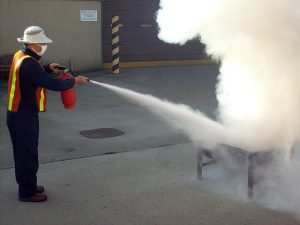
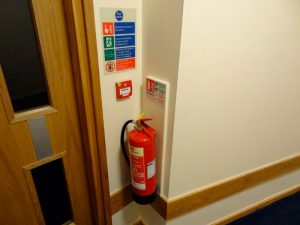
Do not arbitrarily perform repair work wiring, switches, electrical appliances, lighting devices. Luminaires should be fitted with standard shades for protection. The distance between the light bulb and easily flammable products must be at least 0.5 m. Devices plugged into the socket must under no circumstances be left unattended.
Responsibilities of employees in the workplace
Employees of enterprises must always adhere to fire safety rules when performing work with flammable materials, be sure to keep cleanliness and order in the working rooms, do not litter the aisles with foreign things. Before starting work, make sure that the working equipment is installed in its place.
If violations of fire safety regulations are detected, the chief engineer or other responsible person should be aware of this. Each employee must know where the primary fire extinguishing devices are located, and also, if necessary, be able to use them. All workers should be aware of necessary actions during fire evacuation. must be clear.
Maintenance of heating systems and communications for fire water supply
Drying of any flammable substances is prohibited. Defective heating devices must not be used. The distance between heating elements and pieces of furniture should not be less than 70 cm.
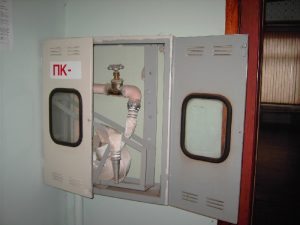
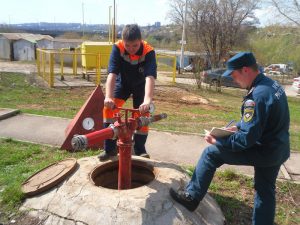
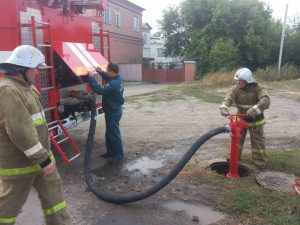
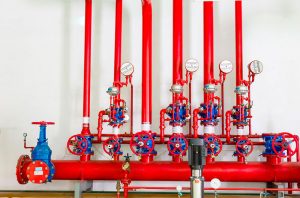
fire fighting water supply network must always be kept in good condition and provide the required amount of water according to the norms to extinguish the fire. According to the instructions, the condition of fire hydrants should be checked every six months in the spring and autumn seasons.
The water supply located inside the working premises must be equipped with fire hoses located next to the taps.
Performing fire hazardous work
To perform all types of fire hazardous work, the head of the facility must issue a special work permit. Before implementation, it is necessary to coordinate the planned actions with fire department and inspect the workplace.
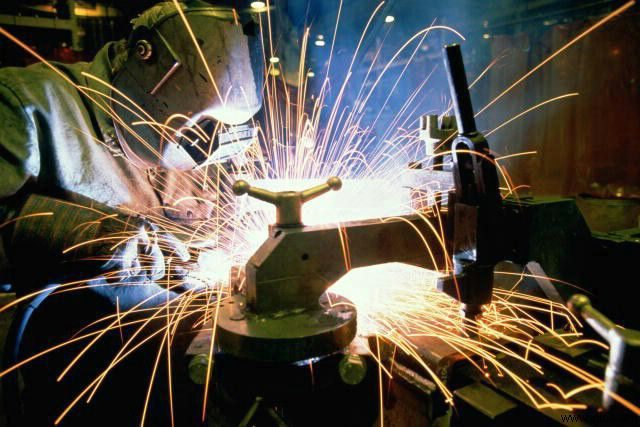
Permission to carry out such work may be issued for a period of not more than a day to employees who have passed preliminary training in special courses. There must be primary fire extinguishing devices at the place of carrying out hot work.
Objects made of flammable materials located within the hot work area must be protected by special coatings from sparks or watered, if necessary. Ventilation openings, openings, special inspection hatches must be covered with non-combustible materials. Before activation welding devices make sure there is no electrode in the holder. It is impossible to use power sources, the design of which includes pulse generators.


